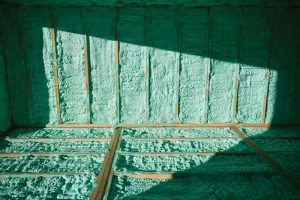The increased use of continuous insulation (c.i.) represents a fundamental shift in the way building insulation and energy efficiency efforts are approached in construction. As conversations around sustainability and energy conservation gain traction, c.i. has received greater attention among both commercial and residential customers.
Traditionally, insulation was installed in buildings primarily between structural elements, such as studs, creating the potential for thermal gaps that could lead to substantial heat loss and a reduction in overall energy efficiency. The use of c.i. challenges this conventional approach by wrapping the entire building envelope with a continuous layer of insulation to effectively mitigate thermal bridging and heat loss.
Insulation is becoming increasingly complex, and the role of c.i. continues to evolve as knowledge of building science and the environmental impact of construction practices grow. Since its introduction, c.i.’s use has remained relatively limited to the commercial sector. It remains rare for most top insulation contractors to install c.i. on residential projects. However, the importance of c.i. can no longer be ignored, as it has become a significant part of stricter building codes, including the 2021 International Energy Conservation Code (IECC). The code sets minimum requirements for energy-efficient residential and commercial building design and construction. For many of the current U.S. climate zones, the IECC has mandated c.i. to be a construction component on the exterior of the assembly. Some zones, however, will see different requirements due to extreme weather conditions. Builders and contractors working in zones with c.i.-related mandates must now determine how to best adapt to a technology that has become part of the code.
This insulation can, of course, present challenges. Its use, especially across the commercial side, may require adjustments to conventional construction methods, as well as a greater investment in training new talent and upskilling current employees. In addition, c.i. materials and techniques must meet rigorous performance standards to ensure long-term effectiveness. However, for a growing contingent of customers on both the commercial and residential sides, the benefits—energy savings, improved comfort, and a reduced environmental footprint—far outweigh the challenges. Such insulation is now a vital component of sustainable, future-proof building design, and there are unique paths available for those willing to be innovative and explore them.





